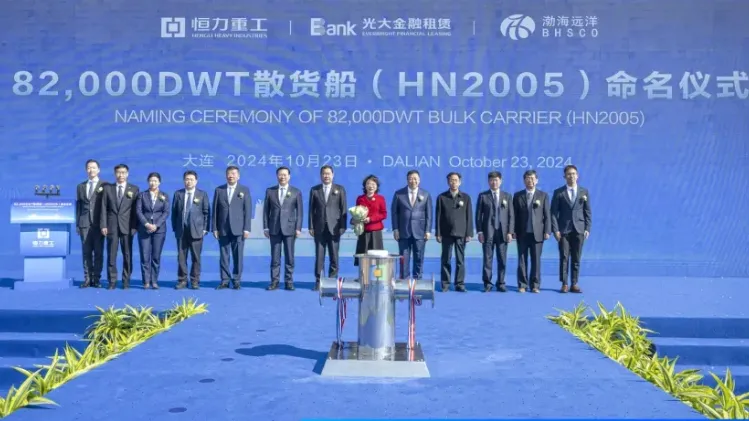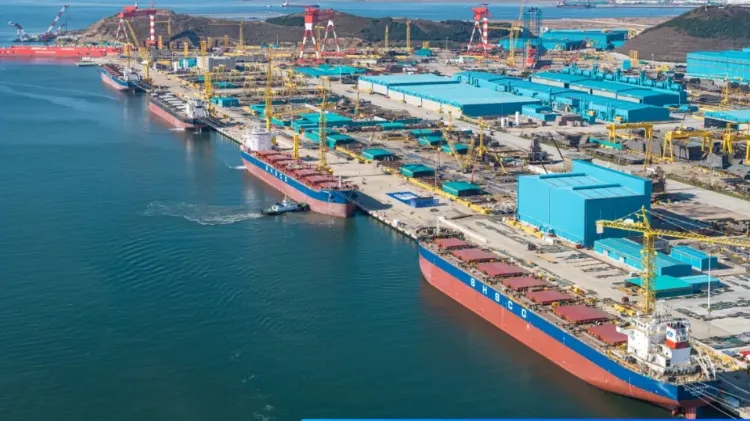On October 23, Chinese shipbuilder Hengli Heavy Industry Group held a grand naming and delivery ceremony for a 82,000 DWT bulk carrier. The new vessel was named “BH POWER”, becoming the first 82,000 DWT bulk carrier built by Hengli Heavy Industries after its reorganization.

In August 2023, Bohai Shipping and Haixing Shipping, Everbright Financial Leasing, Hengli Heavy Industry signed three 82,000 DWT built bulk carrier project.
As the mainstream bulk carrier vessel type in the ocean shipping market, the vessel has a total length of 229 meters, a width of 32.26 meters with a design speed of 14.0 knots, a deadweight of 82,000 tons. Classed by ABS, “BH POWER” has the remarkable characteristics of “green, environmental protection, energy saving, safety, etc.” and is the latest generation vessel that meets the requirements of Tier Ⅲ and EEDlphase3 of the International Maritime Organization (IMO).

It is reported that this year marks the second anniversary of the establishment of Hengli Heavy Industry. As a newcomer in the industry, Hengli Heavy Industry has demonstrated a strong momentum of development: at the beginning of the year, the construction of the first VLCC independently designed and developed by Hengli Heavy Industry was started; in April, the first vessel (61,000 DWT bulk carrier) was delivered ahead of schedule; in September, the first engine independently produced was successfully delivered.
As of now, there are more than 30 vessels under construction, including ultra-large oil tankers, ultra-large container ships, ultra-large ore carriers and LR2 oil tankers.

Hengli Heavy Industry started construction of the second phase of the project in August this year. Only two months later, the second phase of the project has entered the peak period of steel structure hoisting. After the first and second phases of the project are fully put into production next year, Hengli Heavy Industry will have an annual production capacity of 2.3 million tons of steel and 180 engines, and will achieve full coverage of four dual-fuel engines: LNG, LPG, methanol, and ammonia.


